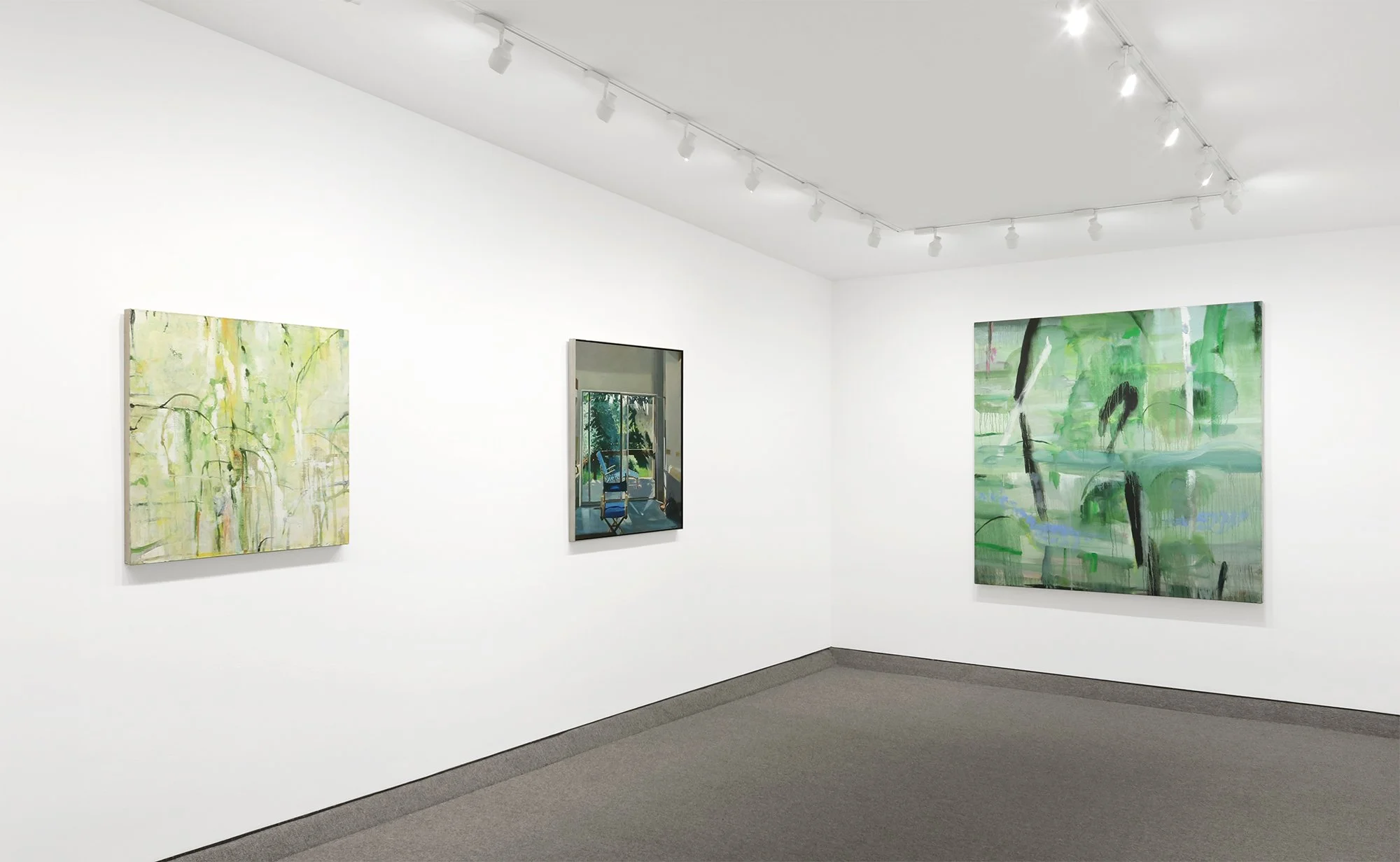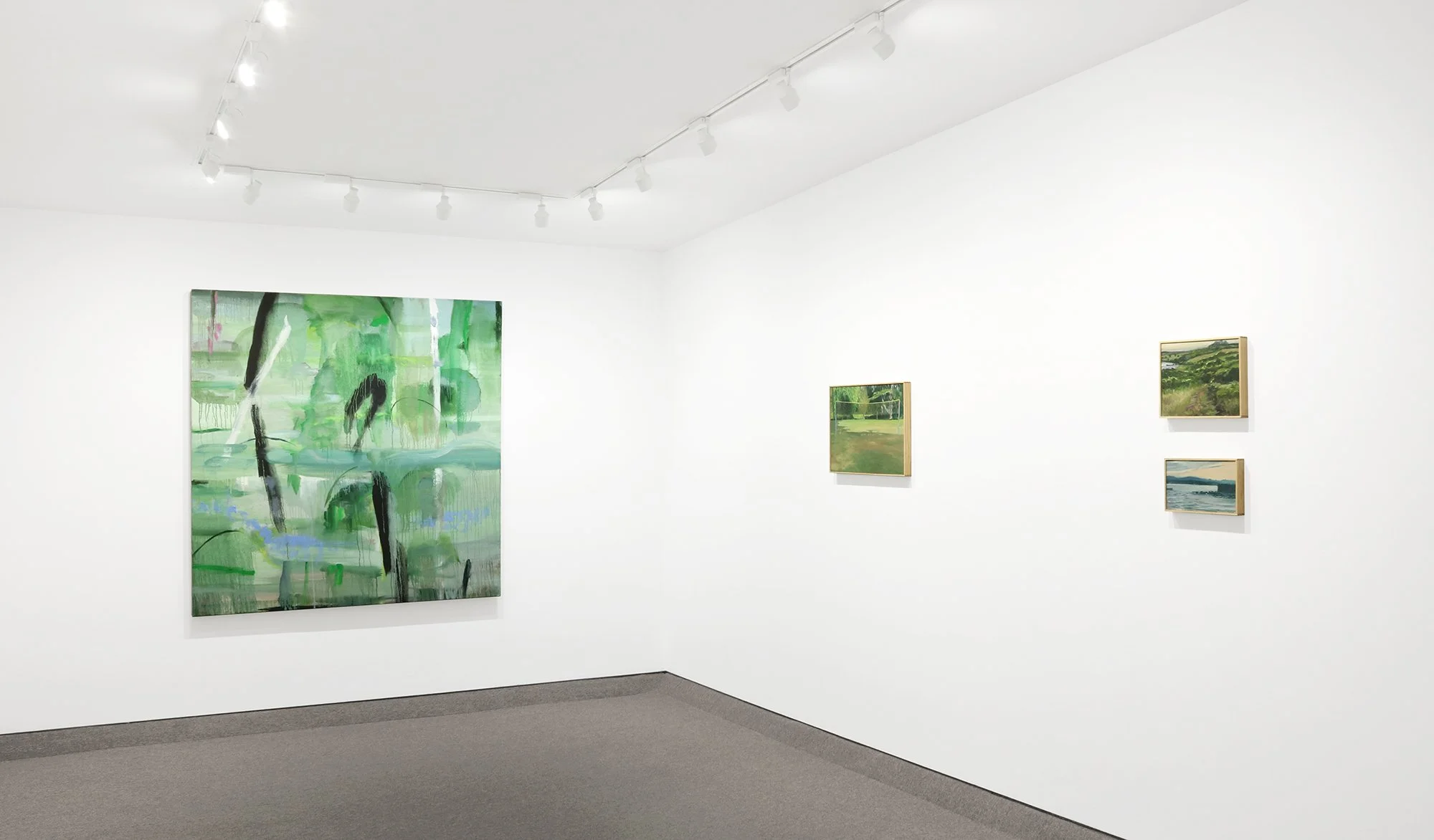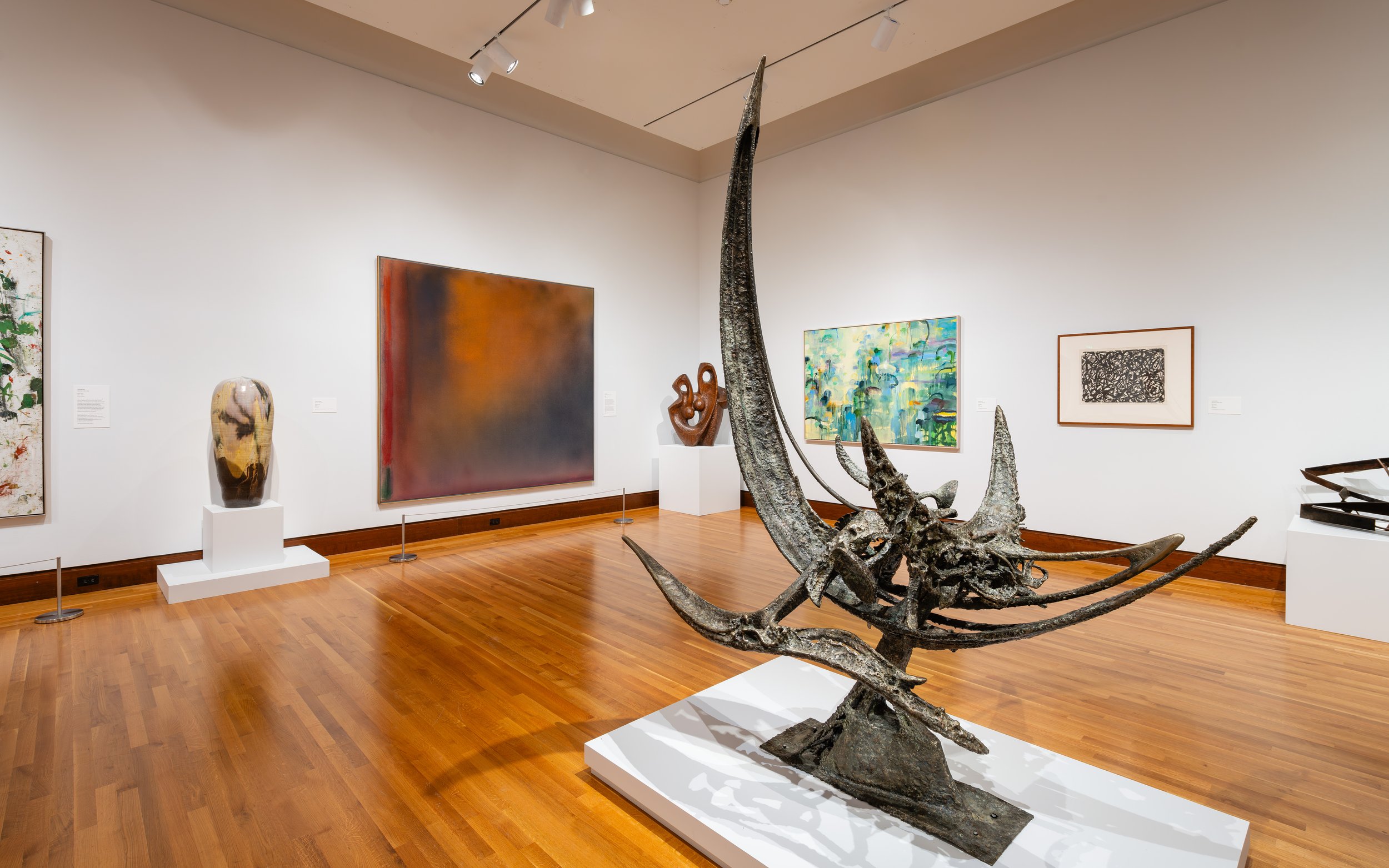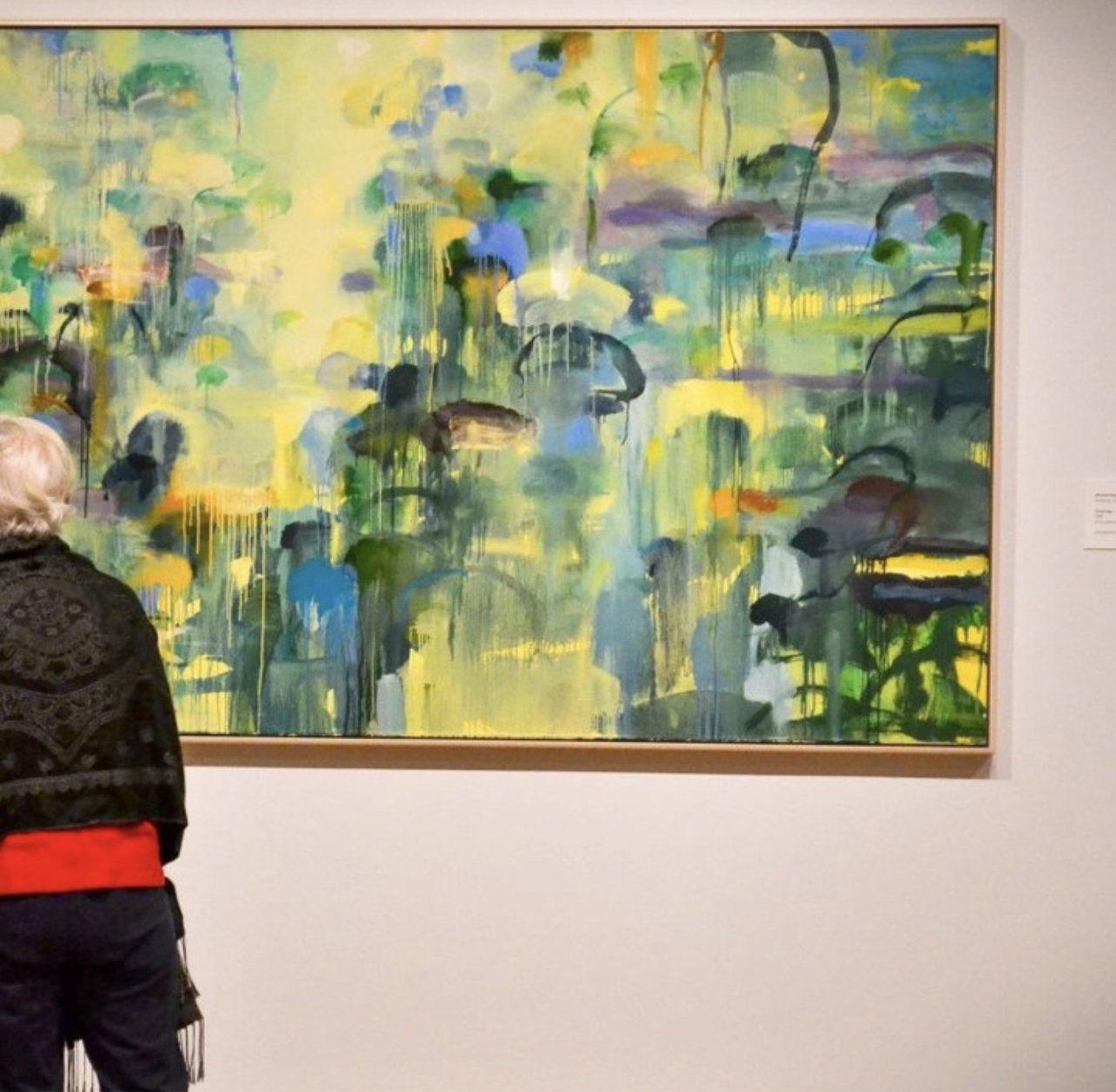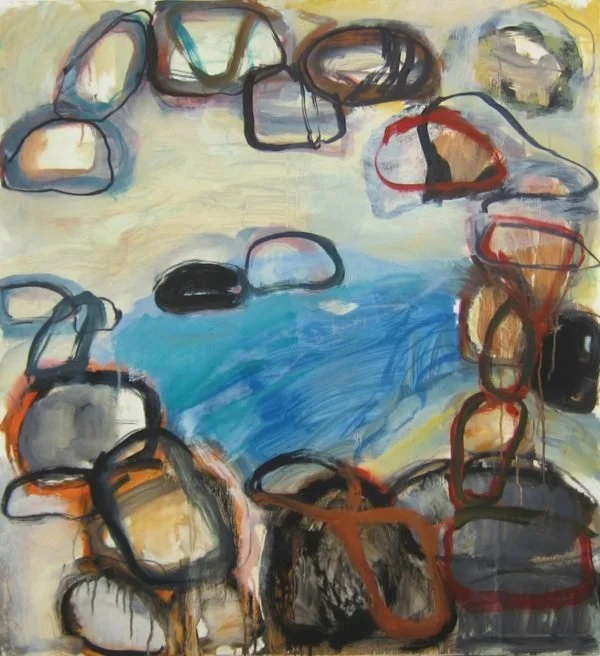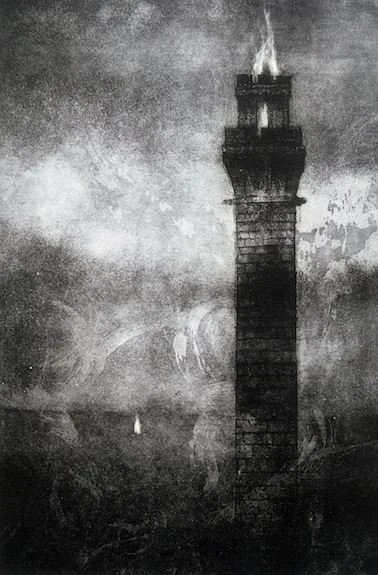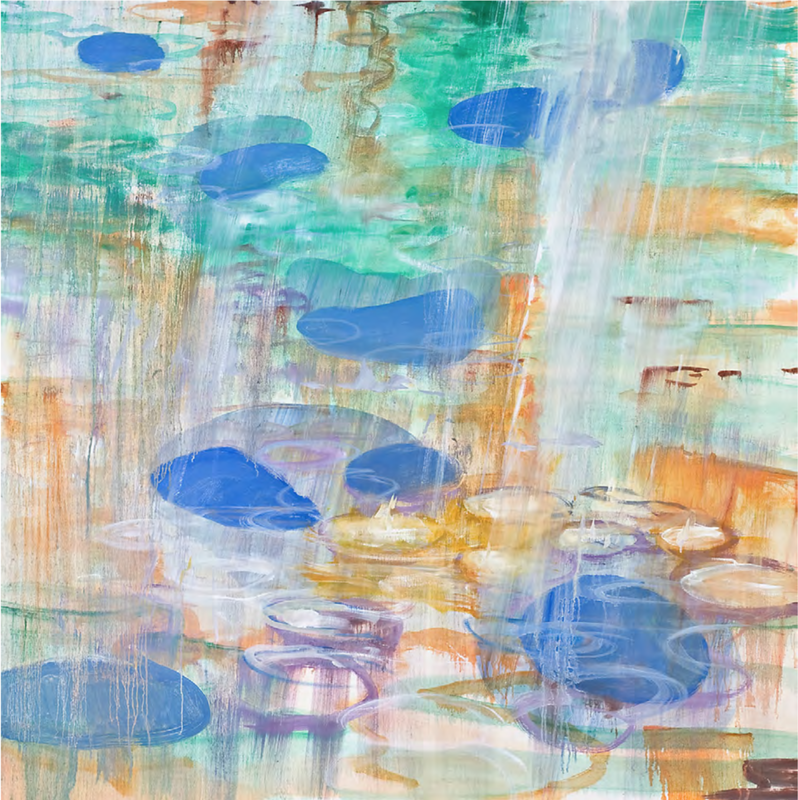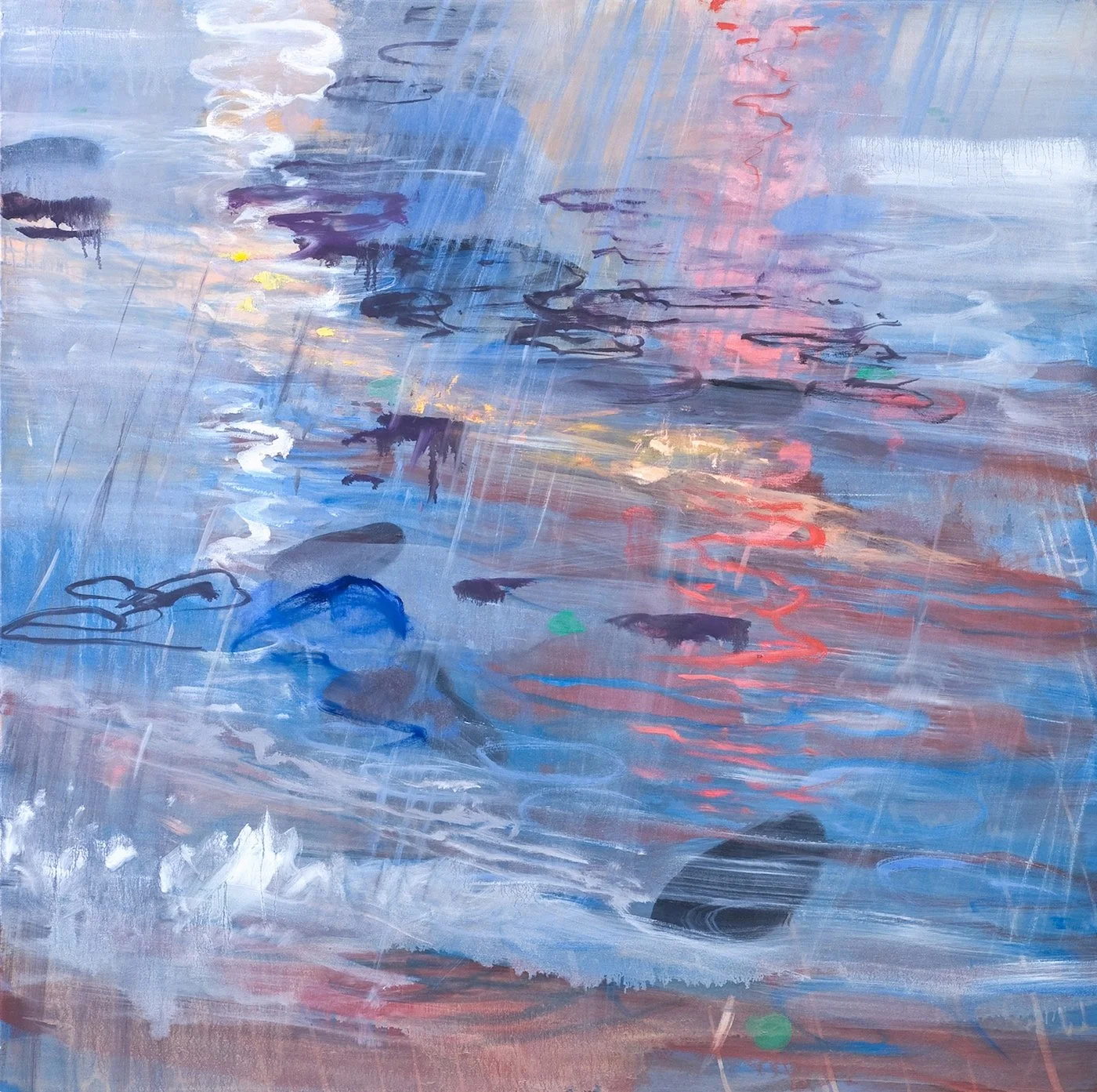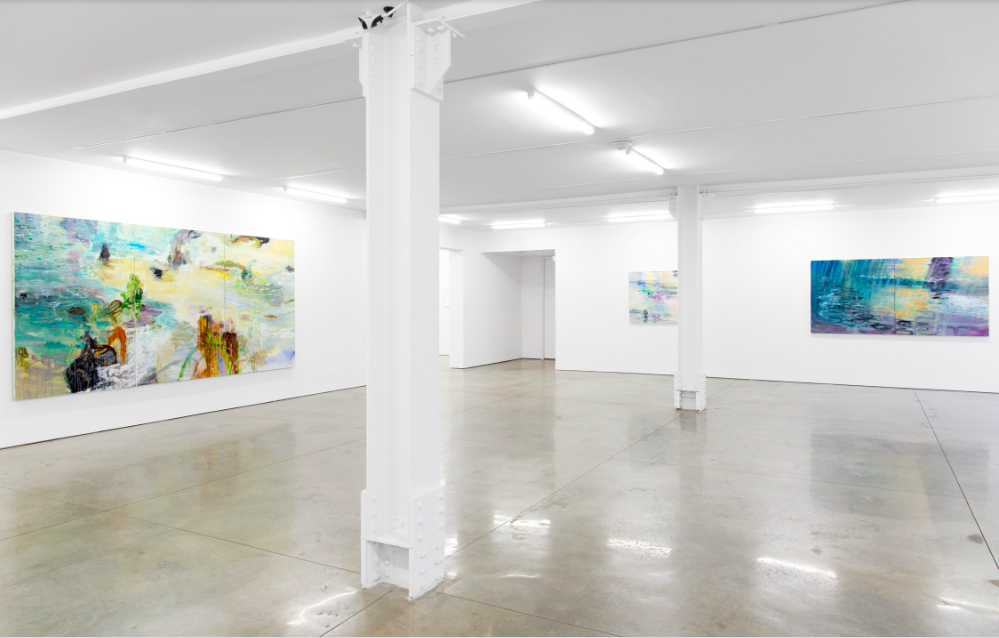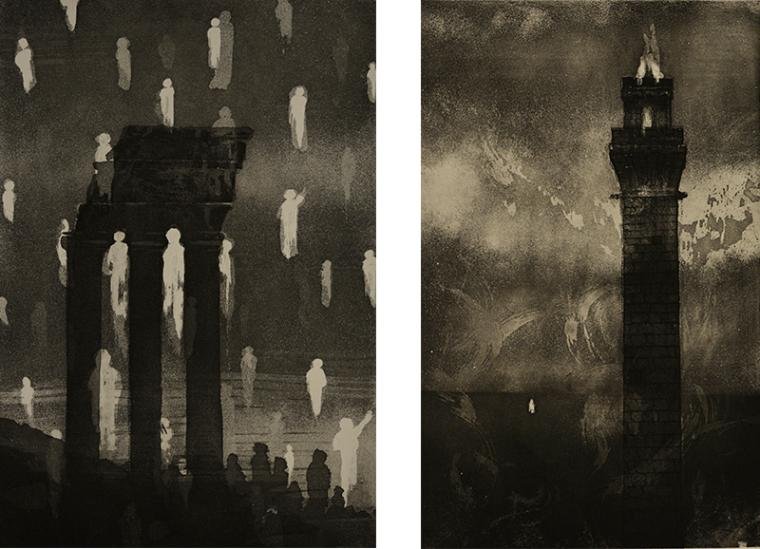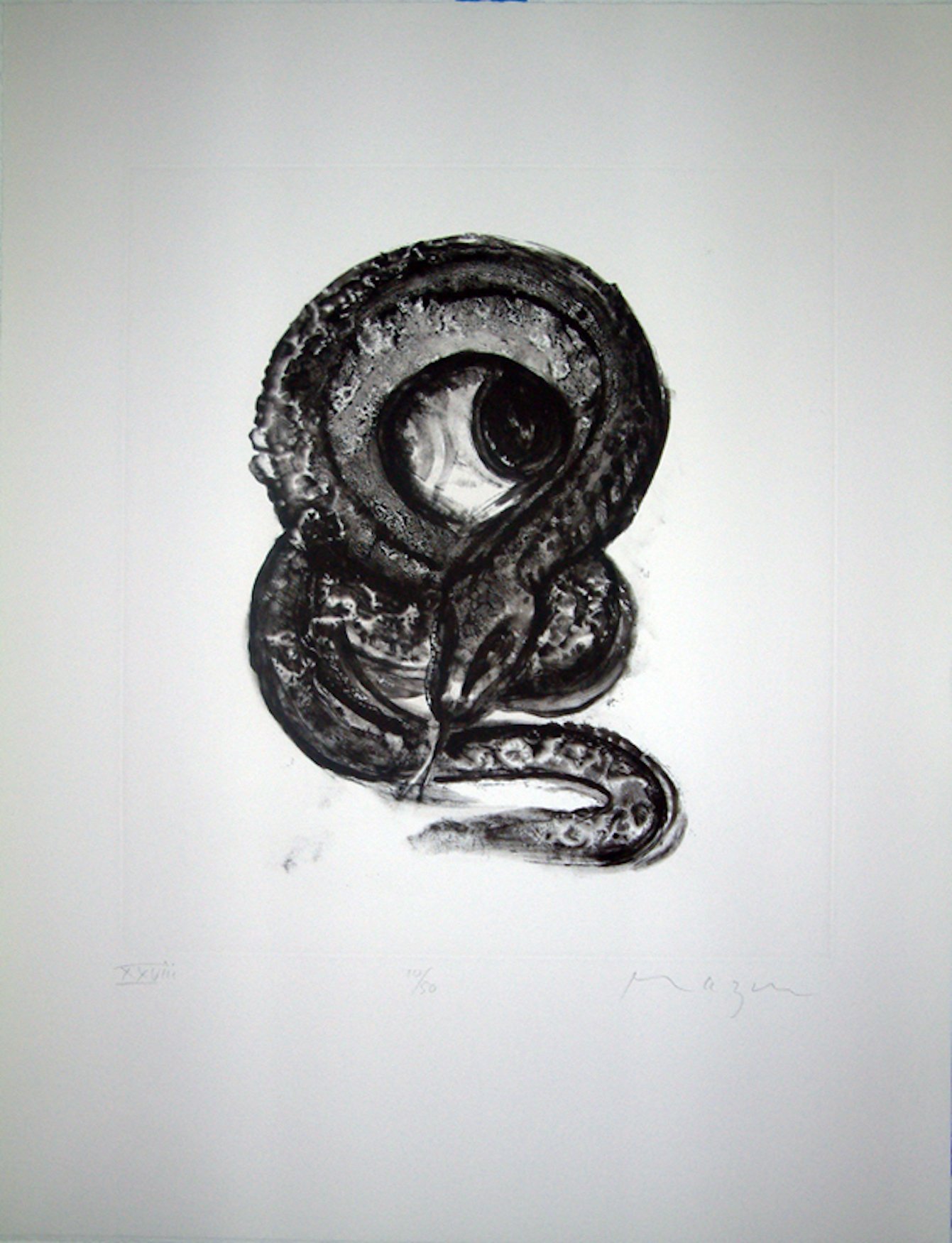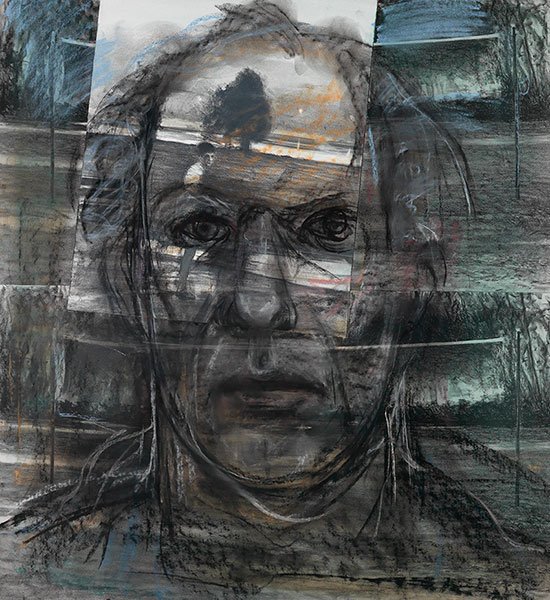News
Exhibition News: Michael Mazur: Paintings, 1970-2008 @ Krakow Witkin Gallery, June 15 - July 19, 2024
““If there is any kind of freedom that the post-modernist period has allowed, it is a freedom to move through different types of work-to take different parts of the artist’s personality and express them at different times and sometimes even simultaneously.””
Michael Mazur: Paintings, 1970-2008
June 15 - July 19, 2024
Krakow Witkin Gallery, Boston, MA
“If there is any kind of freedom that the post-modernist period has allowed, it is a freedom to move through different types of work-to take different parts of the artist’s personality and express them at different times and sometimes even simultaneously.”
—Michael Mazur
Michael Mazur first exhibited with Harcus Krakow Gallery in 1976 and, over the years, had relationships with Portia Harcus, Barbara Krakow, and Andrew Witkin. Krakow Witkin Gallery, in conjunction with Mazur’s Estate, proudly presents an exhibition juxtaposing figurative paintings from the 1970’s with abstract ones from the 1990’s and 2000’s.
“For Mazur, it is the distinctiveness of the surface rather than the choice of subject matter that defines an artist’s individual style. This emphasis on surface has been a constant aspect of his work over the span of his career; and it has been a persistent but ever-changing commitment to the art of landscape that has brought him to this realization… Michael Mazur’s most abstract paintings owe their distinctive forms to a delicate balance between old meaning and new techniques. His landscapes retain associative meaning from both the internal landscape of the body and the external world of nature.”
—Susan Danly, former Curator of American Art, Mead Art Museum, Amherst College
Mazur’s paintings exhibit the artist’s consistent belief in equality. Equality of space, activity, people, and subject matter. In the 1970’s, Mazur’s handling of a backyard scene was as focused on mark making and color as it was on the foreground and background of each scene, with the entire surface being of equal importance. In his later abstract works, the same can be said, and by exploring both modes (and in all sizes), Mazur shows that both figuration and abstraction, along with all the space between, were significant areas to explore with the same amount of attention, creativity, and energy.
“In the gesture of resolution, evoking the dynamism of the world in a static medium, Michael Mazur’s distinctive intelligence asserts itself in the play between perception and form-making. Haltingly, in the pleased fumbling of the one who tries to imagine the artist’s imagining, happily, I follow.”
—Robert Pinsky, poet, essayist, literary critic, and translator
On view: “Pond Edge” at Currier Museum of Art
Photos by Morgan Karanasios
Until March 31, 2024, Michael Mazur's “Pond Edge” is on view at the Currier Museum of Art in Manchester, New Hampshire. The exhibit is "Toward the New: A Journey Into Abstraction." Read more from the Currier Museum’s website:
In its enduring commitment to reinterpreting its museum holdings and proposing new perspectives, the Currier Museum of Art presents a new collection-based exhibition looking at the long journey toward abstraction that encompasses its many manifestations.
Many painters celebrated the physical properties of paint for its own sake – its thickness, texture, color – beyond its historic role as a transmitter of visual information, while sculptors used modern materials and industrial processes. Artists featured in this exhibition employed a variety of tools for inspiration, including complex compositional formulas, bold geometric forms, experiments in visual perception and arbitrary color, and the unconscious.
Many of the Currier’s all-time favorites are included in the show, such as Pablo Picasso’s Woman Seated in a Chair (1941), Josef Albers’s Homage to the Square: Early Rising I (1961), Alexander Calder’s Petit Disque Jaune (1967), and Joan Mitchell’s Cous-cous (1961–1962).
Currier Museum of Art
150 Ash Street
Manchester, NH 03104
603.669.6144
visitor@currier.org
Exhibition News: “Michael Mazur: Wakeby Islands” at Ryan Lee Gallery
Michael Mazur: Wakeby Islands
On view: October 25 – November 25, 2023
Opening reception: Saturday, October 28, 4:00-6:00pm
RYAN LEE Gallery, 515 West 26th St, NYC, 10001
Visit the gallery website
RYAN LEE Gallery is pleased to present Michael Mazur: Wakeby Islands, the artist’s sixth solo exhibition with the gallery. The exhibition celebrates the artist’s most famous Wakeby series (1982), a remarkable study of landscape and memory that follows Wakeby Pond’s full cycle of birth, life, death, and renewal—a subject Mazur would return to for years to come. The exhibition includes two monoprints (including some of the largest monotypes to date), an oil painting, and three pastels—all of which display his multidisciplinary dexterity across mediums to create a stunning variance in mood and technique.
Wakeby Pond, an idyllic body of water landlocked on Cape Cod, was where Mazur and his wife, poet Gail Mazur, spent much of their time from the 1970s on. Working from a long-time art studio on the bay, Mazur created prints and paintings of the pond, exploring shifts in perception and time through multiple horizon lines and inclusions of cut-outs of previous Wakeby landscapes, creating ‘picture-within-picture’ compositions. These details disrupt the seemingly linear timeline of a landscape and offer an exciting tension to the composition.
In Gail’s Garden, Wakeby (1983), gentle purple and white flowers convey a patient study of nature and its overgrowth. There are psychological undertones to the loose and gestural flowers overtaking the garden scene, conveying metamorphosis through their sprawl. A series of pastel-on-paper Wakeby studies also approaches the subject with softness, albeit with suggestions of capriciousness. Mazur pays particular attention to creating a nimble horizon line, interrupted by treetops and shrubbery against a colorful, cloudy sky.
Layering, of both subject and content, plays prominently in Mazur’s work. Originally discovering monotype through an exhibition of Edgar Degas’s works in the medium, Mazur was encouraged to explore its capacities. In practice, Mazur worked with master printmaker Robert Townsend in choreographic motions to achieve the extremely experimental and painterly washes in the Wakeby sessions. He eventually began incorporating simulacra through “ghost” impressions of print-over-print layering, and employing the technique of chine-collé, which effects diaphanous backdrops to each print.
Beyond the technical aptitudes underlying each artwork on view, the content itself speaks of a serene, somewhat mystic place. In the Wakeby Night triptychs from 1983 and 1984, we see oversized flowers loitering over a moonlit lake. In the earlier work, the moon glows in green tones, with flora exploding in the foreground; in the later iteration of the scene, while the sunflowers beam yellow, the night light casts a deep blue haze over the more subdued plant life, evoking an entirely different feeling of the placid pond.
Each panel in the original Wakeby Day/Wakeby Night series represented the single largest monotype ever printed at that time, placing the works themselves squarely into the realm of canonical, art historical touchpoints. Not only have the works been produced on massive scales, such as a grand in situ commission in 1982 by the Massachusetts Institute of Technology, but they also now belong to the collections of the Smithsonian American Art Museum, DC and Brooklyn Museum, NY.
The masterful range of technical nuances used to make these works—like the use of a roller to offset an image on one plate to another, the use of solvents to create painterly drips and layers, and the artist’s uses of his own fingers and rags to create impressionistic, tactile landscape portraiture—are not only iconic to Mazur’s career and œuvre, but to the evolution of the medium and art form of monotype at large.
On view: “Seaside Studio” at Albert Merola Gallery
Michael Mazur, Untitled (Rocks and Water), 2003 oil paint on vellum 30 x 27 1/2 inches (Photos courtesy Albert Merola Gallery)
Michael Mazur’s ‘Seaside Studio’
Artist Michael Mazur’s former studio in the East End of Provincetown, where he worked for more than 30 years before his death in 2009, seemed to float at high tide, nestled as it was into the shoreline astride the home and gardens he shared with his wife, the poet Gail Mazur. Working on the water, Mazur created astonishing gestural paintings of the sea that are as rooted in the natural world of the Outer Cape as they are mysterious and transporting.
“Seaside Studio,” on view at Albert Merola Gallery (424 Commercial St., Provincetown) through Oct. 5, is a collection of Mazur’s paintings, mixed-media pieces, drawings, and monotypes from the early aughts that are rich in autumnal color and ethereal in shape and line. The works depict the tidal dance of the bay in all its characteristic swirl.
Rocks are scattered and linked along the shoreline; underwater, they’re rendered as jewels. Each piece in the series is a version of the infinite variations of the sea and its contents. Mazur’s layered color-wash technique creates works that are permanent records of temporary perfections.
Splitting his time between Provincetown and Cambridge, Mazur made profound contributions to contemporary art. His work is part of many prominent collections, including the British Museum, the Metropolitan Museum of Art, the Whitney Museum of American Art, and the Museum of Fine Arts Boston. He taught printmaking at Harvard for 20 years and is a touchstone for many artists who have lived and worked in Provincetown.
“He was tireless in his work ethic,” says gallerist Albert Merola. “He was never without pencil or pen and paper, and he was drawing up until the last days of his life. Mike was a special force in the Provincetown arts community, and his presence is missed to this day. He was an inspiration to us all.” —Kirsten Andersen
Original text from The Provincetown Independent, September 21, 2022
Publication news: Michael Mazur’s “Images from a Locked Ward” in Manual Magazine’s Spring 2022 Issue
“Territories of the Self,” On Michael Mazur’s Images from a Locked Ward
by Leon J. Hilton
Michael Mazur (RISD faculty, ca. 1961)
American, 1935–2009
Impressions Graphic Workshop, Inc., publisher
The Corridor, from the portfolio Images From A Locked Ward, 1965
Lithograph on paper
Plate/sheet: 50.8 × 65.4 cm. (20 × 25 3/4 in.)
Gift of Jim Dine 80.266.2
© Michael Mazur; Courtesy of the estate of the artist and RYAN LEE Gallery, New York
If we did not know from the title of the series that we are viewing images from a locked mental-hospital ward, The Corridor [Fig. 1] might suggest another setting, namely a perspectival view of a proscenium stage as seen by someone sitting in the audience of a theater. Proscenium wings are suggested by the curtain-like “legs” framing the stage, stretching back into the further distance. Abrasively sketched figures are perhaps walking, but more likely standing.
The Corridor is the second lithograph in Images from a Locked Ward, Michael Mazur’s series of fourteen lithographs printed in 1965 and published as a limited edition in collaboration with the eminent Boston lithographer George Lockwood. The lithographs are the culmination of a period of image-making shaped by Mazur’s firsthand observations of life in the psychiatric ward of the Howard State Institute of Mental Health in Cranston, Rhode Island, where starting in 1962 Mazur worked alongside his RISD students as a volunteer instructor in the art therapy program. The Corridor presents a view of asylum architecture’s orderly segmentation of space, designed to maximize the visibility of the human beings inhabiting it. The architectural elements function as instruments that are used therapeutically to manipulate the human beings. Yet the theatricality of the setting also enhances the sense of something chimerical, even ghostly, about the several seemingly human forms that flitter across the horizontal plane. Spectral and desubjectized, their faces are turned away from us or obscured by shadows.
If The Corridor presents the asylum as a stage set, the image that follows in the Locked Ward series, The Occupant [Fig. 2], gives us a portrait of sorts: a medium-length shot that takes us closer to one of the figures. Here a figure sits slouched in wheelchair, body contorted at an uncomfortable angle as if to meet the gaze of the viewer head-on: the facial expression is intensely rendered but also difficult to interpret. It is a face that might be looking out at us with curiosity, smiling with a friendly greeting, or perhaps grimacing.
The Occupant reiterates in lithographic form a composition that Mazur first used in 1962 in an aquatint etching in his Closed Ward series. In it, finely cut swatches of shadowy ink made up of thin straight bands emanates diagonally from the back of the seated figure’s head to the upper right corner of the page. Contrasted with the rigid verticality of the lines used to designate the background walls and horizontal lines indicating the floor, this diagonal swoop suggests the movement of the patient’s head as he turns in his wheelchair in the direction of the viewer, in curiosity or surprise at the arrival of an unexpected visitor. In both the 1962 and 1965 iterations of The Occupant, the most predominant shape, and the source of the composition’s strangely radiant energy, is the wheelchair in which the subject is seated.
On view: Mazur’s “The Inferno of Dante” at the Springfield Art Museum
The Inferno of Dante: Etchings by Michael Mazur
September 18, 2021 - February 20, 2022
Weisel and Kelly Galleries
Springfield Art Museum
“Illustration, like translation, is risky business… At worst, illustrations can sidetrack the reader by introducing ideas or images that change the meaning of the text, skew its tone, diminish its impact. At its best, though, illustration is a reinvention.’’ - Michael Mazur
The Inferno is the first and most familiar of the three sections of The Divine Comedy, a narrative poem written in the early 14th century by the Italian poet Dante Alighieri. The poem recounts a journey that defines the human condition. Told in the first person, it follows Dante and his guide, the Roman poet Virgil, as they travel through Hell, Purgatory, and eventually Paradise. The Inferno is an exploration of sin, weakness, despair, sadness, and loss. Countless artists have been inspired by The Divine Comedy, including Gustave Doré, William Blake, and Auguste Rodin.
Painter and printmaker Michael Mazur had a lifelong fascination with the poem. In the early 1990s, Mazur and longtime friend poet Robert Pinsky (U.S. Poet Laureate 1997-2000) collaborated on the production of a new illustrated translation of The Inferno pairing Mazur’s monotypes with Pinsky’s translations. This initial project was later expanded into a portfolio of etchings.
Traditionally, illustrations of the poem have included the figures of Dante and Virgil. Notably, Mazur chose “absolutely not to put Dante and Virgil in these images. I wanted to show the things they saw, not to show them seeing – so that there would be no distance between you and the image.” The resulting portfolio, shown in its entirety here, includes 41 etchings paired with the relevant excerpted portions of Dante’s poem in Italian with Pinsky’s English translations.
This exhibition is pulled from the Museum's permanent collection.
https://www.sgfmuseum.org/256/The-Inferno-of-Dante-Etchings-by-Michael
On view: “Gathered at the edge of light” at Albert Merola Gallery
Michael Mazur: Gathered at the edge of light
June 12 - July 1, 2020
Albert Merola Gallery, Provincetown MA
The Albert Merola Gallery is happy to present our first exhibition of 2020: paintings by Michael Mazur. The title, Gathered at the edge of light comes from a passage early on in Dante’s Inferno. It is appropriate in many ways, not least of which is that Mazur was deeply involved with Dante’s masterwork, and had a deep love of all things Italian. One of his major accomplishments was the epic illustration of the Inferno. He made drawings, monoprints, and a complete suite of etchings, illustrating the story of Dante and Virgil’s journey through Hell. This accompanied the translation done by Robert Pinsky, a United States Poet Laureate and dear friend of Michael and Gail Mazur.
The paintings in the current exhibition reflect two different periods - The Branching paintings are from the mid-1990’s, and the Rain on Water are the last series that he worked on before his death in 2009.
Michael Mazur lived his life as an artist. He was never not observing or drawing or thinking about work. He was deeply interested in the human condition, as is evidenced in his Locked Ward Series and portraits, but was deeply moved and involved with the natural world, and how the two interacted. Studies from nature were always part of his practice. The beautifully lush Tendrils, or Blue Branching, evoke dreamy worlds between nature and abstraction. These branching forms were also incorporated into some of the Dante imagery he created.
The Rain on Water series is endlessly fascinating. Water into water - reflecting in the light, ceaselessly combining and reforming. These are beautiful, colorful, joyous celebrations of the most transient and ungraspable images. They express the fleeting sense of time and motion, while uniting all the deeply felt abstract imagery that Mazur had explored for much of his lifetime.
For many years Michael Mazur painted in his studio on the water in Provincetown. His studio was, literally, often “on the water”, as it sat on the harbor beach, and the tides would wash up underneath. This proximity to the shoreline would infiltrate his work, as is seen in Bay Rain III - a breathtaking summation of all those things, expressed in a view of Provincetown harbor.
Mike’s contributions to the Provincetown art community and its history have been significant and wide-ranging. He founded the Provincetown Print Project in 1990, and was the driving force behind five years of the Fine Arts Work Center’s Print Project Portfolio. The print room there is named after him in recognition for his contributions to the practice and to the Work Center.
We’d like to give special thanks to Gail Mazur for her support and guidance and to Bryan Smith for his invaluable assistance in making this exhibition possible.
Michael Mazur had been making prints, drawings and paintings for over 50 years. His work has been shown in over 150 solo and group exhibitions, and is included in most major public and private collections throughout the country.
His work has been exhibited at MOMA, The Whitney Museum of American Art, The Brooklyn Museum, and the Metropolitan Museum of Art. A traveling retrospective of his prints opened at the Museum of Fine Arts, Boston in 2000. He was a full time faculty member at RISD, Brandeis University, and later, a visiting artist for many years at Harvard’s Carpenter Center. He served on the Boards of the Artist Foundation in Boston, MA, the Council for the Arts and Humanities, and was an Overseer of the Museum of Fine Arts in Boston. Mazur was on the Board and Visual Committees of the Fine Arts Work Center in Provincetown, Massachusetts and was its Co-Chair from 1997 until 2001.
From the Archive: The Last Testament of Michael Mazur (John Yau for Hyperallergic)
At the end of his life, Mazur wanted to evoke his passage into chaos, to compose his farewell. John Yau, November 11, 2018
Recently, I showed the film Fifi Howls from Happiness (2013) by Mitra Farahani to my undergraduate class. The film is about the last days of Bahman Mohassess (1931 – 2010), an Iranaian artist living in Rome in a hotel room that he seldom leaves. At one point, he tells an anecdote about the day Pablo Picasso died, followed by one about Salvador Dali lying on his deathbed, and sitting up and cursing a priest who has come to visit him. We see him laughing heartily after recounting each story. How to stage your departure as you shuck off your mortal coil was a subject that fascinated Mohassess, who knew his own end was fast approaching. Fahrani believes Mohassess wanted the film to be made, knowing it would document his death, and that it would be his final performance-cum-work-of-art.
A few days later, I went to see the exhibition Michael: Late Work, Rain and Flowers at Ryan Lee (October 25–December 22, 2018). The exhibition included five paintings, three of which were done the year he died, and in the small back gallery, 13 pen-and-ink drawings selected from the more than 100 Mazur did in the summer of 2009, when he had lost much of his mobility. Drawn on modest-sized sheets of paper, depicting cut flowers as well as plants and ferns growing in the artist’s backyard, they are dated between June 15 and August 17, 2009, the day before he died. Having looked at the entire set of drawings some years ago, I hope that someday they will be published together as a book, as they are a moving chronicle of a man who, facing the end of his life, spent each day saying hello and good-bye.
Michael Mazur, “Bay Rain III” (2009), oil on canvas, 48 x 48 inches (all images courtesy Ryan Lee Gallery)
On view: “Late Work, Rain and Flowers” at Ryan/Lee Gallery
Michael Mazur: Late Work, Rain and Flowers
October 25 – December 22, 2018
RYAN LEE is pleased to announce an exhibition of paintings and drawings by Michael Mazur (1935–2009). Known for his virtuosic facility with painting, drawing and printmaking, Mazur remains celebrated for his relentless drive to create and reinvent. Late Work, Rain and Flowers presents a selection of paintings and previously unexhibited drawings that were made in the final years of Mazur’s life.
Throughout a career that spanned more than half a century, Mazur explored a range of styles, techniques and subject matter. He often worked in series and in various media at once, experimenting with stencils, airbrushing and printing on silk. Content impelled him, whether he was responding to social injustice or absorbing aesthetic traditions of the Far East. As Mazur explained to Robert Brown in a 1993 interview for the Smithsonian’s Archives of American Art, “…content drove my engine, but the form always interested me, in terms of its relationship to the content… form-making, the facture of making paintings or drawings or prints, that has interested me and had its influence on me throughout all the work.”
This mutually constitutive relationship between form and content in Mazur’s oeuvre is particularly evident in the stylistic divergence between these two late bodies of work. While each treats an elemental form of nature, the fragility of the flower drawings presents a stark contrast to the power and dynamism of the pounding rain in the oil paintings. In the Rain paintings the viewer is subsumed, both caught in torrential downpour and somehow under water. The simultaneous horizontality and verticality in Bay Rain III (2009) suggests visual access from above as well as head-on while also presenting a Rorschach-like reflection of itself. Combined with rocks and ripples rendered in turquoise, cerulean and lavender, the resulting image evokes creation and disintegration. By contrast, Mazur’s floral drawings are delicate and minimal. Despite limited mobility during a period of recovery in the last year of his life, he produced over 100 ink drawings of plants and flowers—many of which had been given to him by his wife or observed in his own garden. Executed in black ink, these intimately scaled images seem to hover, emerging and receding from the negative space.
Taken together these last works by Mazur illustrate the dueling potentialities of nature and art. As Mazur explained when the Rain paintings were first exhibited in 2009, shortly before his death, “all good and great paintings provide a whiff of mortality and, ultimately, are a celebration of the life force; they are both the tunnel and the light at its end... Light and dark, color and its absence, form and anti-form all contribute to this.”
Michael Mazur (1935 New York, NY – 2009 Boston, MA) is an internationally recognized artist known for his fluidity between paintings, drawings and prints as well as between abstract and representational imagery. Born and raised in New York City, Mazur moved to Massachusetts in 1953 and received his BA from Amherst College. He received his BFA and MFA from Yale University in 1959 and 1961, respectively, and he was later heralded by The Boston Globe as one of the greatest painters and printmakers that New England produced in the second half of the 20th century. Mazur first exhibited in 1960 and quickly earned acclaim, receiving a
Louis Comfort Tiffany Foundation grant, John Simon Guggenheim Foundation award and an American Academy of Arts and Letters fellowship in just two years. Mazur was invited to represent the United States in the 1975 Venice Biennale, but he declined to participate in protest of the Vietnam War. Over the next 50 years, he was the subject of more than 80 solo exhibitions and included in numerous group shows. In 2000, the Museum of Fine Arts, Boston held a retrospective which traveled to Stanford University Art Museum, the Jane Vorhees Zimmerli Art Museum at Rutgers University and the Minneapolis Institute of Art. Mazur’s work is held in several prominent collections, including the British Museum, London; Cincinnati Art Museum; Cleveland Museum of Art; de Cordova Museum, Lincoln; Los Angeles County Museum of Art; Museum of Fine Arts, Boston; Art Institute of Chicago; McNay Art Museum, San Antonio; Metropolitan Museum of Art, New York; Museum of Modern Art, New York; Philadelphia Museum of Art; Whitney Museum of American Art, New York; Yale University Art Gallery, New Haven; and Zimmerli Art Museum at Rutgers University, New Brunswick.
On view: “Along the Shoreline" at Albert Merola Gallery
Albert Merola Gallery of Provincetown, MA presents
Michael Mazur: Along the Shoreline,
featuring oil paintings, monoprints, and other work.
For many years Michael Mazur painted in his studio on the water in Provincetown. His studio was, literally, often “on the water,” as it sat on the harbor beach, and the tides would wash up underneath. This proximity to the shoreline would infiltrate his work, and in fact, one of his signature series is titled "Rocks and Water."
The exhibition opens June 15 and runs through July 4, 2018
Opening: June 15, 7 to 9 pm
424 Commercial Street, Provincetown
For directions and more information, visit the Gallery's website.
Article: Michael Mazur’s Inferno of Dante: The Artist and Me Plus Dante and Suzanne
Michael Mazur’s Inferno of Dante: The Artist and Me Plus Dante and Suzanne.
By Eric M. Zafran
From “A Perspicacious Tenure, Suzanne Boorsch at Yale.”
Looking back over my life and career, I realize that I was very fortunate in who I met and the choices I made. The first lucky move was choosing to attend Brandeis University, in Waltham, Massachusetts. It not only had the Rose Art Museum, where I became an intern and got my earliest professional museum experience, but also had outstanding art history and studio art departments. Unusual was the school’s requirement that art history majors take courses in studio art. Thus it was that I found myself in 1965 in a life-drawing course being taught by Michael Mazur. I knew nothing of him as an artist, but he was a demanding yet understanding teacher. He quickly recognized that I was hopeless at life drawing and so recommended that I transfer instead to his printmaking class. At the time, I had no idea that this was Mazur’s first year at the university (where he would remain for ten years) and that he (a student of leonard Baskin) was already recognized as a distinguished printmaker, who would eventually become quite renowned. For me, he was a rigorous professor whom his students wanted to please, and it was he who provided me with an introduction to the techniques of woodcut, engraving, and etching. This proved invaluable knowledge, as I do not think anyone who has not handled the tools and engaged in the process can really appreciate the works of Durer, Rembrandt, Goya, or Picasso. Mazur gave his students great freedom to develop their own approach and experiment with these various media. I responded to the challenge and selected a large metal plate to produce an elaborate etching and aquatint that to me still retains a certain direct intensity and brings to mind my involvement with the printmaking process and my interaction with a brilliant artist.
This experience was to have long-lasting influence on my development. I went on to New York University’s Institute of Fine Arts and had my first job in the Print Department of what was then Parke-Bernet Gallery, followed by an internship in the European Paintings Department of the Metropolitan Museum of Art. At the Metropolitan Museum, I met the incredible staff of the prints department, which included, at that time, A. Hyatt Mayor (who became my master’s thesis advisor) and Suzanne [Boorsch], who would become a good friend and colleague. Suzanne remained there until moving to Yale, and I went on to a variety of curatorial positions, ending up as her neighbor in Connecticut, at Hartford’s Wadsworth Atheneum. I was so pleased to discover that among Suzanne’s many distinguished acquisitions at Yale was Mazur’s remarkable portfolio of etchings, The Inferno of Dante, illustrating the translation of his friend the poet Robert Pinsky.
The subject had interested the artist since he had first read Dante as a student in 1957, but it was not until the early 1990s, when working in close collaboration with Pinsky, that Mazur produced a powerful series of monotypes of which a number were incorporated into the book published in 1993. As Mazur has observed, “We were both focused on the original. Dante was the visionary after all. We collaborated with him. We are two Jews who saw in the poem not the dogma of the church but a great contribution to the humanistic tradition in literature… Overall the tone was one of sadness and loss. This had to be communicated through both language and image.”
While the published version of The Inferno was very successful, Mazur felt that his images needed to be seen as individual plates, accompanied by text translations, rather than captions, and so he began working on a new set of etched illustrations, which were first exhibited at the castle of Dante’s patron, Cangrande della Scala, in Verona, Italy. Over a six-year period, from 1997 through 2002, a set of forty-one etchings was completed for the present grand two-volume portfolio, in which the images are juxtaposed with handsomely printed pages that have the text in both Italian and English.
Previous illustrators of Dante’s text, including the rather theatrical Gustave Dore, with whose works I had coincidentally been much concerned, depicted in realistic fashion Dante and Virgil on their journey through Hell. Here, instead, as the poet and critic Lloyd Schwartz has rightly noted, “Everything we see is, as it were, through [Mazur’s and Pinsky’s] eyes. Mazur’s images compel us to identify with the poet’s primary experience: the bewildering sense of space -- swirling, often mysteriously dislocated; the stupendous grandeur of the infernal architecture; the grotesque tortures of the sufferers and their profound pain.”
To capture these fantastic visions, Mazur employed the rich texture of the black-and-white etchings, printed on bright white paper, to portray the hallucinatory subjects in a near-abstract fashion. There are far too many brilliant images to detail in a short appreciation, but for me the series is truly launched by the plate accompanying canto 2, Twilight, which makes brilliant use of light and dark to evoke the words:
Day was departing, and the darkening air
Called all earth’s creatures to their evening quiet
While I alone was preparing as though for war…
I commenced: “Poet take my measure now;
Appraise my powers before you trust me to venture
Through that deep passage where you would be my guide.”
As if rising from a mountaintop, the spirit of the poet, surrounded by birds in flight,
ascends through a starry sky toward a haloed space set within a glowing circle.
The series of images concludes in startling and thrilling fashion with a final “landscape” for canto 34, titled Once More the Stars. It depicts, in a burst of swirling blue -- the first time color appears in all the prints -- the hill of Purgatory, which, as Schwartz writes, “looks very much like the false hill of ascent in canto 2. But this time, the image through the lens is heavenly -- stars swimming in the firmament.” The poet’s text reads in part:
Through a round aperture I saw appear
Some of the beautiful things that Heaven bears,
Where we came forth, and once more saw the stars.
Michael Mazur died in 2009 at the age of seventy-three, and I am sorry that I never got to thank him for his profound influence on me or praise in person his powerful works. Hopefully, this short text will acknowledge his achievement and prove that his memory is still vividly alive both at Yale and wherever great art is appreciated.
# # #
Editor’s note:
Images: Use Twilight from this page. Caption: Michael Mazur, etching, Twilight, from Il Inferno di Dante.
On view: Michael Mazur's L'Inferno di Dante at the de Saisset Museum
Michael Mazur and the power of interpretation
Ambitious portfolio gives Dante’s Inferno a contemporary appeal
In 2016, the Saisset Museum was fortunate to accept into our collection several bodies of work by artist Michael Mazur (1935-2009) through a generous gift of the Estate of Paula Kirkeby. The donation included Mazur’s ambitious portfolio L’Inferno di Dante, which is currently on view at the museum. In this series, Mazur creates a harrowing vision of hell through a series of etchings that layer rich texture, technical detail, and nuanced meaning.
Mazur and The Inferno
Michael Mazur maintained an almost life-long interest in and study of Dante Alighieri’s The Divine Comedy (1320), specifically being drawn to The Inferno, – the first of the three sections to this epic poem.
During a gap year in the midst of his undergraduate studies at Amherst College, Mazur lived in Italy and studied Italian – in part so he could read the poem in its original language. Upon returning to the States, he created a set of illustrations based on The Inferno during his senior year of college. But this was only the beginning of his study and interpretation of the classic text.
“Illustration, like translation, is risky business…At worst, illustrations can sidetrack the reader by introducing ideas or images that change the meaning of the text, skew its tone, diminish its impact. At its best, though, illustration is a reinvention.’’ - Michael Mazur
In 1992, Ecco Press (a New York-based publishing imprint of HarperCollins) launched a project inviting twenty poets to contribute translations of Dante’s Inferno – each poet translating a different canto. Mazur attended several public readings of these new translations, including a presentation by his friend, and later U.S. Poet Laureate, Robert Pinsky. After the reading, Mazur inquired if Pinsky intended to continue to translate the entirety of the Inferno, expressing his interest in illustrating Pinsky’s translation. Collaboration soon ensued.
In the coming months and years, Pinsky would fax his translations to Mazur who in turn read the translations, cut out individual passages, and created illustrations for each canto. Approximately a third of the way through this collaboration, Farrar, Straus, and Giroux (an American book publishing company that is today a division of Macmillan) contacted Pinsky and Mazur and expressed interest in publishing the series together as a book.
Mazur created monotypes as the studies for the books illustrations so that if a study ended up seeming more “powerful” than a later illustration, Mazur could use the study instead.
"Michael Mazur's approach to the Inferno gave me inspiration and guidance in understanding Dante. The monotypes, nourished by the artist's intense engagement with the poetry, are themselves acts of translation, embodying vital principles."
—Robert Pinsky (quote from the preface to I'll Tell what I Saw: Images from Dante's Divine Comedy)
In total, Mazur amassed over 200 unused studies. The resulting book was widely distributed and Mazur began to exhibit and sell the monotypes.
He soon decided, however, that he wanted a more permanent set of prints to represent his interpretation of the cantos and settled on creating a new series of etchings based on the original monotypes. In the resulting series of etchings, which were created over a span of six years (1994-2000), Mazur pairs his etchings with sheets of vellum on which is printed the excerpts from the cantos to which he is responding – in both the original Italian and Pinsky’s 1994 translation. These etchings and accompanying vellums were distributed in two structures: a bound book and as loose-leaf pages.
The de Saisset Museum was gifted the loose leaf version by the Estate of Paula Kirkeby. The entirety of the series -- all forty-one etchings and thirty-nine vellums -- are currently on view in the exhibition Michael Mazur’s L’Inferno di Dante.
Mazur, who passed away in 2009, considered the Inferno his most ambitious work. While other notable artists have created illustrations of, or at least related to, the Inferno, others had not produced a chronological series depicting each canto as Mazur accomplishes here. And unlike other artistic renditions of the Inferno that choose to show Dante and Virgil in third-person perspective, Mazur places viewers directly in the place of the travelers. We see Dante’s world as if we are seeing through his eyes.
Mazur and California
Mazur, though a predominantly East Coast artist (with ties to New York and Massachusetts), had a California connection that later directly linked him to the de Saisset Museum and Santa Clara University. Paula Kirkeby, founder and owner of the fine art press Smith Andersen Editions in Palo Alto, CA, worked with Mazur, both exhibiting his work and inviting him to residencies at the press.
Over time, he created a series of monotypes at Smith Andersen Editions, two of which are part of the de Saisset Museum’s permanent collection. Since 1984, the de Saisset Museum has housed Smith Andersen Editions Archive, and these monotypes by Mazur came to us as part of the then-growing archive. Today, the archive holds close to 270 works on paper by the diverse artist who worked with Kirkeby and her master printers.
Smith Andersen’s former Master Printer, Kathryn Kain, visited the de Saisset Museum in the fall of 2017 with her students from SCU’s Department of Art and Art History Introduction to Printmaking class. She wanted students to see the current exhibition of L’Inferno di Dante and study Mazur’s incredibly detailed and compelling etchings. Kain who recalls working with Mazur at Smith Andersen Editions, guided her class in studying the etchings and discussing the nuanced printmaking process, and accompanying techniques, Mazur employed to create these compelling works.
Final weeks to see these incredible etchings
Michael Mazur’s portfolio L’Inferno di Dante is on view through June 16, 2018 at the de Saisset Museum in the exhibition Michael Mazur’s L’Inferno di Dante.
May 8, 2018
https://www.scu.edu/desaisset/blog/blog-posts/michael-mazur-and-the-power-of-interpretation.html
Recent Gifts on display at Provincetown Art Association and Museum
Twelve works on paper by Michael Mazur were recently presented by Gail Mazur to the Provincetown Art Association & Museum. Consisting of monotypes and charcoal drawings made in 1989, this cycle of images depict seagulls fighting over and devouring a dead skate, a scene Mazur witnessed on the beach at Provincetown.
The pictures, most of which had never before been exhibited, were on display as part of the PAAM’s "Recent Gifts" show.
From the Archive: “Series of Thought”
The Common | A Modern Sense of Place
Written by Betsey Garand
November 3, 2017 Issue 14
Documentaries on Mazur's Monotype Process Now Available Online
The documentaries, Making Monotypes: the Art of Michael Mazur (15 min) and Wakeby Day, Wakeby Night: a Monotype Mural By Michael Mazur (29 min), are now available for online viewing.
Each video explores the creative practice and theories of this important American artist. In Making Monotypes, Mazur demonstates the techniques involved in monotype, the printmaking medium he revolutionized between the 1980s and 2000s. As Mazur creates a pair of monotype images of an amiryllis the camera captures each step of the process, accompanied by an insightful and informative narration by the artist.The subject of "Wakeby Day, Wakeby Night," is one of the most ambitious monotype projects in printmaking history, Mazur's monumental installation commissioned by the Massachusetts Institute of Technology. Again, the viewer is given an intimate and detailed look at the materials and methods of this distinctive process, from initial sketches through final printing. Interviews and narration by the artist explain and illuminate the process.Taken together, these two short films provide an understanding of the art of monotype as well as the artistic philosophy of this brilliand and innovative prinmaker and painter.
On view: Mazur and Monet at Currier Museum
Michael Mazur's painting "Pond Edge" (1996) was on view at the Currier Museum of Art in Manchester, NH, in conjunction with the exhibit "Monet: Pathways to Impressionism” July 1, 2017–November 13, 2017
Mazur's picture, which is in the museum's permanent collection, was included in a room of work relating to Monet:
"In the same vein as Monet, and the French Impressionists, Mazur sought to paint his impression of nature, rather than a realistic depiction of the scene. Pond Edge alludes to forms in nature while remaining dreamily abstract."
Michael Mazur “Pond Edge,” 1996, oil on canvas, 52 in. x 74 in. (132.08 cm x 187.96 cm) Collection of the Currier Museum of Art, Manchester, NH. Henry Melville Fuller Fund, 2003.14
From the Archive: Remembering Michael Mazur, Betsey Garand gallery talk at Mead Art Museum
JUNE 1, 2017

Perspectives on Michael Mazur: Gallery Talk with Betsey Garand, Senior Resident Artist at Amherst College and Gail Mazur, Poet and wife of the late Michael Mazur
Friday, May 26 at 2:30pm Mead Art Museum
A new exhibition at the Mead Art Museum honors the memory of one of the most distinguished artists to have graduated from Amherst, during what would have been his 60th reunion year.
During Reunion weekend, alumni attended a gallery talk honoring the memory of artist Michael Mazur, who died in 2009. Michael Mazur might be the best-known visual artist to have graduated from Amherst. A painter and printmaker, he earned acclaim for reviving the use of monotype prints. Today, his works are in permanent collections around the world, including the British Museum in London and the Metropolitan Museum of Art in New York City.But before that, Mazur was an undergraduate attempting to figure out his life and career. As Senior Resident Artist Betsey Garand explained at a gallery talk during Reunion last week, Mazur’s legacy began with his ambitious senior thesis project, An Image of Salomé. Influenced by a gap year spent studying art and Italian in Florence, Italy, Mazur’s thesis included 16 hand-carved woodcuts and wood engravings illustrating texts from the Bible, Oscar Wilde, Gustav Flaubert and Stéphane Mallarmé. He made 34 prints of each illustration, and had them bound, with accompanying text, into large, hardcover books. “He printed it all himself,” Garand says, “and it was really quite an accomplishment.”
That thesis, never before displayed in a museum exhibition, is now on view at the Mead, alongside Mazur’s vibrant pastels, large-scale gestural paintings and well-known prints, including Dante's Inferno. The exhibition honors the memory of the artist, who died in 2009, during what would have been his 60-year Amherst reunion. “You can see in all of his work that he really loved getting into the material,” Garand says. “Whatever material and idea he worked with, he fully invested himself in it.” Garand worked with Mazur in 2004, when he visited Amherst as the Robert Frost Library Fellow and spent a week working with students in the printmaking studio in Fayerweather Hall. “His visit had a lasting effect on all who were involved, myself included,” she says. At the time, Garand was well-acquainted with Mazur’s work, having studied it herself as a student at the University of New Hampshire. “He’s an incredible artist who certainly influenced my work,” she says. “I show his work every semester to my students.”
Garand gesturing towards Mazur's painting "Drift IV" (2003).

One such student is David Le ’17E. Upon seeing Mazur’s works during a class visit to the Mead, Le says, “I was astonished by the techniques used in making them, and wanted to learn about the process involved in creating these images.” While taking Garand’s “Printmaking I” and “Working in Series” courses, Le says that with Mazur’s works in mind, he enjoyed exploring techniques for creating intaglio and monotype prints.As part of his own senior project, Le created a series of monotypes inspired by a childhood memory of accidentally setting curtains on fire in his living room. “Betsey mentioned that they were similar to Mazur’s diptych titled Window Sequence (1974), which surprised me,” he says. “I was unaware of how much Mazur’s works had inspired my own artistic practices.”The exhibition, Perspectives on Michael Mazur, remains on view at the Mead Art Museum through Dec. 16, 2017. It includes works from the Mead collection, a copy of Mazur’s senior thesis project from Amherst’s Archives and Special Collections and generous loans from Mazur’s classmates H. Axel Schupf ’57 and Bob Keiter ’57. It is organized by Vanja Malloy, curator of American art, with support from Garand and Gail Mazur, poet and wife of the late artist.
See more photos of the exhibition in the Flickr photo gallery
On view: Perspectives on Michael Mazur at Amherst College
Michael Mazur "Self Portrait," 1986
May 25-December 31, 2017
In celebration of one of the most distinguished artists to have graduated from Amherst College, the Mead Art Museum has organized the exhibition Perspectives on Michael Mazur to honor his memory in what would have been his 60th reunion year. Michael Mazur (1935-2009), Class of 1957, was a talented painter and printmaker, as well as a dedicated teacher and arts advocate who held positions at esteemed institutions including the Rhode Island School of Design, Brandeis University, and Harvard University.
Throughout his 50-year career as an artist, he demonstrated an astounding stylistic range. Mazur worked in many media, especially printmaking, in which he mastered techniques including aquatint, lithography, and monotype. His artworks have been acquired by numerous museums including the Art Institute of Chicago, the Harvard Art Museums, the Philadelphia Museum of Art, the Whitney Museum of American Art, and the Yale University Art Gallery.
The Mead Art Museum holds an important collection of Mazur’s work, and this exhibition combines the Mead’s collection with generous alumni loans to illustrate the sweeping range of Mazur’s oeuvre. The show will include many works that have never been shown in public before, such as his senior thesis An Image of Salome, in addition to his vibrant pastels, large-scale gestural paintings, and well-known prints, such as Dante's Inferno.
Michael Mazur’s work is represented by Ryan Lee Gallery in New York and by Barbara Krakow in Boston.
Perspectives on Michael Mazur at the Mead Art Museum
In celebration of one of the most distinguished artists to have graduated from Amherst College, the Mead Art Museum has organized the exhibition Perspectives on Michael Mazur to honor his memory in what would have been his 60th reunion year. Michael Mazur (1935-2009), Class of 1957, was a talented painter and printmaker, as well as a dedicated teacher and arts advocate who held positions at esteemed institutions including the Rhode Island School of Design, Brandeis University, and Harvard University.Throughout his 50-year career as an artist, he demonstrated an astounding stylistic range. Mazur worked in many media, especially printmaking, in which he mastered techniques including aquatint, lithography, and monotype. His artworks have been acquired by numerous museums including the Art Institute of Chicago, the Harvard Art Museums, the Philadelphia Museum of Art, the Whitney Museum of American Art, and the Yale University Art Gallery.The Mead Art Museum holds an important collection of Mazur’s work, and this exhibition combines the Mead’s collection with generous alumni loans to illustrate the sweeping range of Mazur’s oeuvre. The show will include many works that have never been shown in public before, such as his senior thesis An Image of Salome, in addition to his vibrant pastels, large-scale gestural paintings, and well-known prints, such as Dante's Inferno.
Opening Reception, Thursday, May 25 at 5 p.m. Mead Art Museum
Free & Open to the Public
For more information







